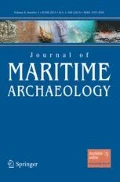For Africa, the sea is of enormous cultural significance. It has fostered communication and transport routes and has allowed civilizations to develop and spread. Human settlement along coastlines has been shaped by sea-borne exchanges. The history of Carthage cannot be understood without the story of its seafaring past, as much as the history of Alexandria, Zanzibar, Mozambique Island, or Malindi can be removed from their maritime heritage. The florescence of exchange over the oceans and along the rivers of Africa has permitted intercultural dialogue and mutual influence. This has happened for better or for worse—the most capable seafarers of the first millennium navigated the great rivers of the continent and departed for distant lands from North African coasts, Chinese junks came for peaceful exchange to Kenya’s coasts, European and North American slave ships transported a massive amount of people from the continent’s shores with the greatest sufferance, and colonialism entered via the coasts with the arrival of Dutch, French, English and Portuguese explorers.
Many traces of this history still exist but not all are visible, as many remains are located on the seabed. Indeed, there are numerous ancient shipwrecks and important submerged coastal ruins, such as those at Sabratha or at Leptis Magna, that are partially or completely hidden under water. Much more awaits discovery. Many ancient civilizations developed in coastal regions of Africa at a time when sea levels were substantially lower than today. This means that many traces of the earliest humans are now located under water. Prehistoric submerged heritage may hold important information on the development not only of the continent’s populations, but all of humanity.
The international community has recognized the importance of protecting submerged heritage by adopting the UNESCO Convention on the Protection of the Underwater Cultural Heritage in the year 2001. The focus of the Convention is to protect the world’s submerged legacy. It aims to ensure the universal protection of this heritage, to facilitate States’ cooperation and to set professional standards by promoting and guiding the development of responsible underwater archaeology, including mitigation work. It recognizes that underwater cultural heritage merits the same attention as land-based heritage, and should be afforded the same protection in light of the many threats created by modern society. This heritage holds still many surprises for the knowledge-seeking scientist as well as for the public who wish to learn about the history of humankind.
This special issue of the Journal of Maritime Archaeology gives a deeply informed and also fascinating insight into the state of current research on the African continent. It is the hope that, with its publication, debate and interest can be fostered. I applaud it as a very significant step in the dissemination of knowledge, but also in raising awareness of the significance and protection of submerged heritage for Africa.
Ulrike Guérin
UNESCO
Secretariat of the Convention on the Protection of the Underwater Cultural Heritage
Author information
Authors and Affiliations
Corresponding author
Rights and permissions
About this article
Cite this article
Guérin, U. Underwater Cultural Heritage and the Maritime Past of Africa. J Mari Arch 7, 1–2 (2012). https://doi.org/10.1007/s11457-012-9099-4
Published:
Issue Date:
DOI: https://doi.org/10.1007/s11457-012-9099-4

